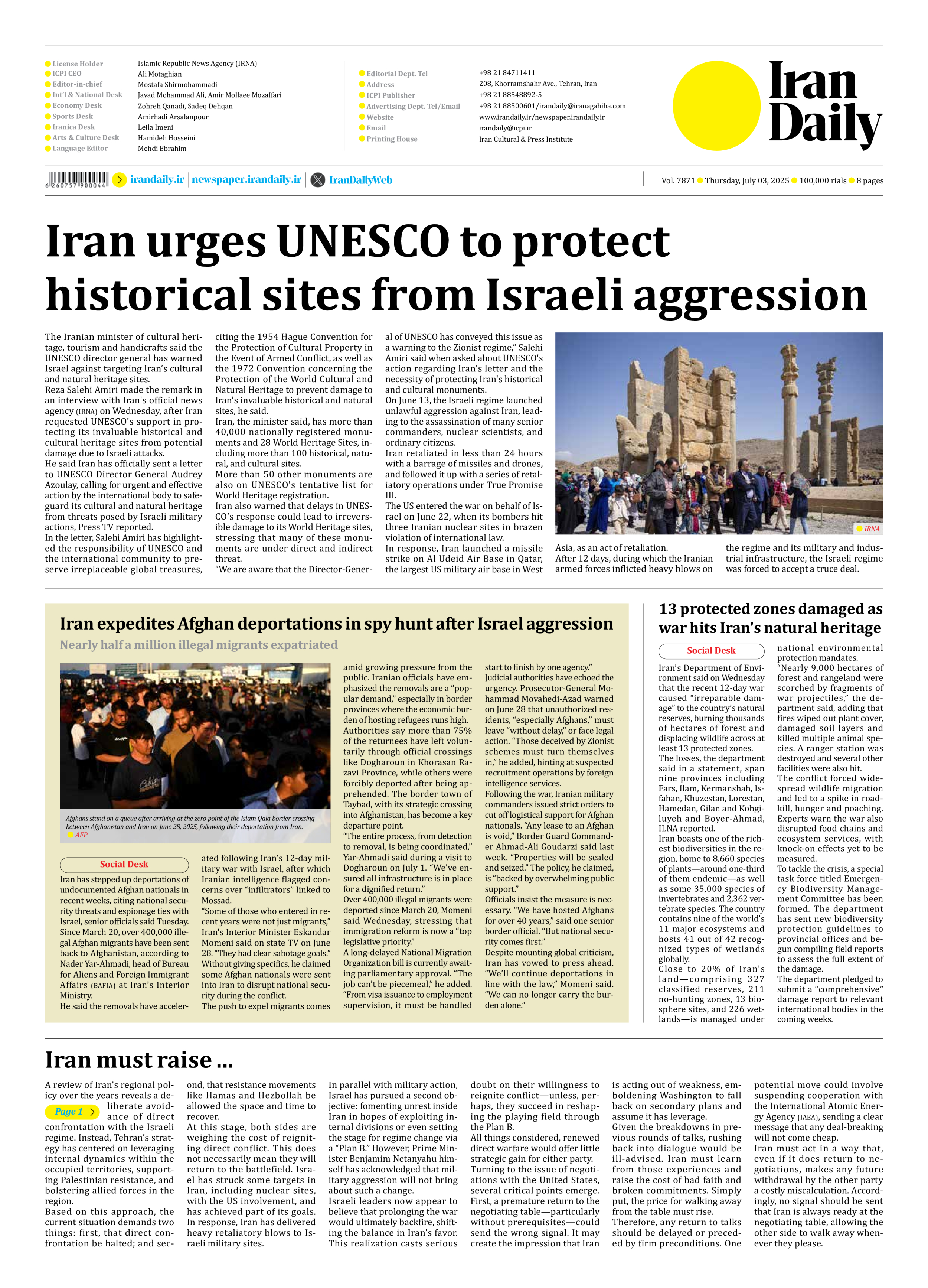
13 protected zones damaged as war hits Iran’s natural heritage
Iran’s Department of Environment said on Wednesday that the recent 12-day war caused “irreparable damage” to the country’s natural reserves, burning thousands of hectares of forest and displacing wildlife across at least 13 protected zones.
The losses, the department said in a statement, span nine provinces including Fars, Ilam, Kermanshah, Isfahan, Khuzestan, Lorestan, Hamedan, Gilan and Kohgiluyeh and Boyer-Ahmad, ILNA reported.
Iran boasts one of the richest biodiversities in the region, home to 8,660 species of plants—around one-third of them endemic—as well as some 35,000 species of invertebrates and 2,362 vertebrate species. The country contains nine of the world’s 11 major ecosystems and hosts 41 out of 42 recognized types of wetlands globally.
Close to 20% of Iran’s land—comprising 327 classified reserves, 211 no-hunting zones, 13 biosphere sites, and 226 wetlands—is managed under national environmental protection mandates.
“Nearly 9,000 hectares of forest and rangeland were scorched by fragments of war projectiles,” the department said, adding that fires wiped out plant cover, damaged soil layers and killed multiple animal species. A ranger station was destroyed and several other facilities were also hit.
The conflict forced widespread wildlife migration and led to a spike in roadkill, hunger and poaching. Experts warn the war also disrupted food chains and ecosystem services, with knock-on effects yet to be measured.
To tackle the crisis, a special task force titled Emergency Biodiversity Management Committee has been formed. The department has sent new biodiversity protection guidelines to provincial offices and begun compiling field reports to assess the full extent of the damage.
The department pledged to submit a “comprehensive” damage report to relevant international bodies in the coming weeks.







